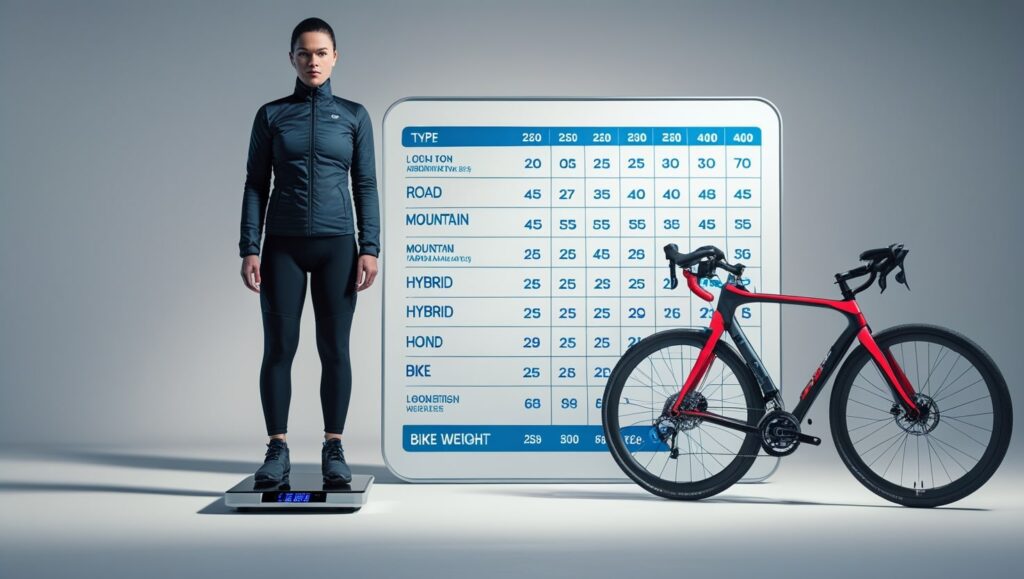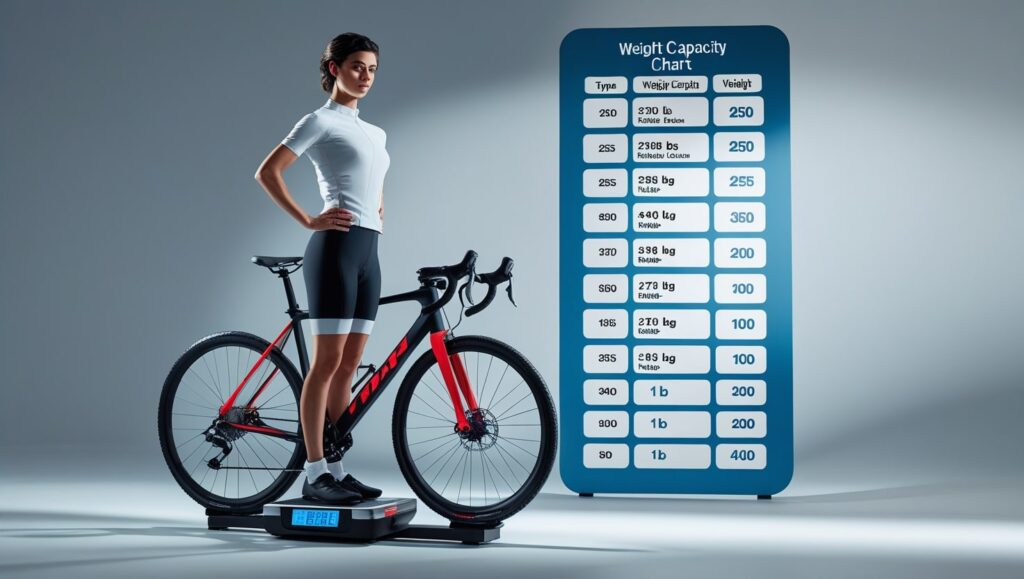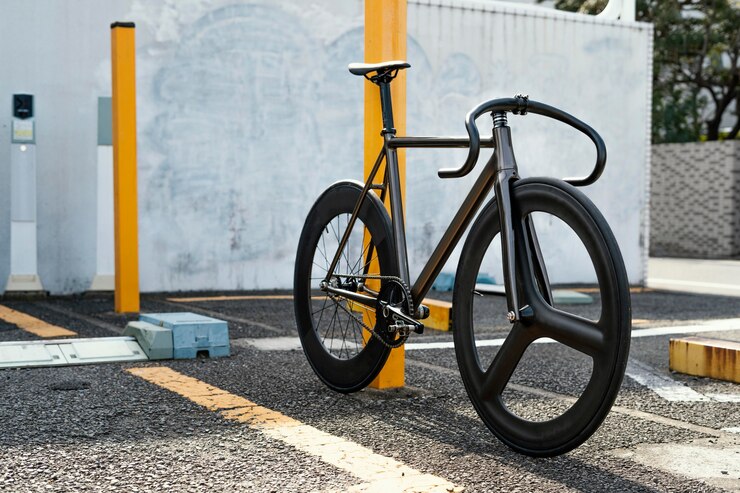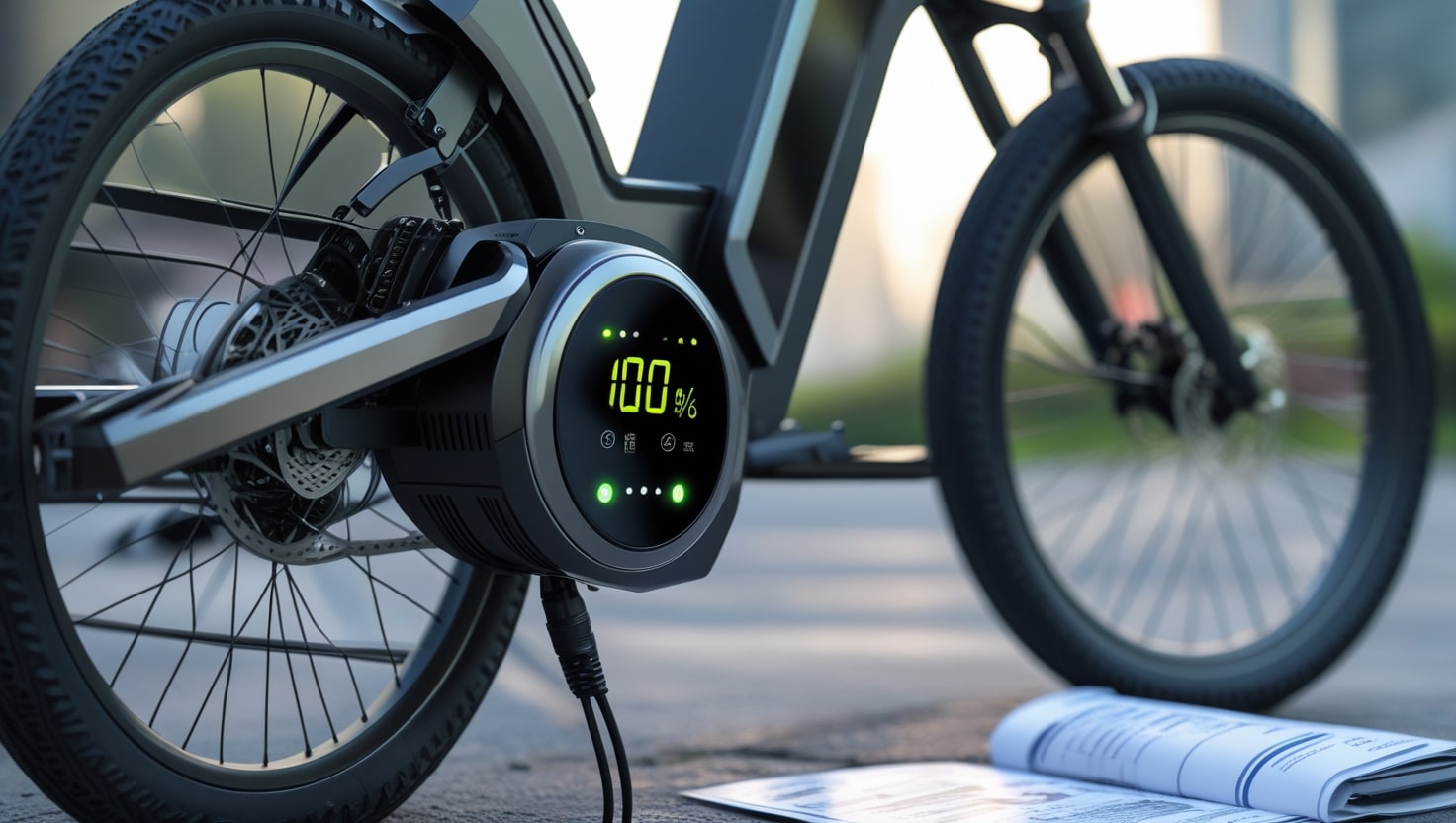When considering bicycles and their weight limits, there are several factors to keep in mind. Bikes come in various types, each with its own geometry, materials, and components, which directly impact the maximum weight they can support. There isn’t a universal size-fits all standard, and while many bikes can accommodate up to 300 pounds (125 kilograms to 136 kilograms), it ultimately depends on the bike’s build. Heavier riders may need to pay closer attention to these weight limits, ensuring their bike’s design can handle the additional strain.
A bicycle’s overall weight limits depend on several factors, such as the frame material, wheel size, and component type. Key considerations for anyone above the average weight are the in-depth features of their bike and how these features affect the bike’s ability to support additional weight. Understanding do bikes have weight limits will provide valuable insight into selecting the right bike for your needs.
Weight Limits by Bicycle Type
| Bicycle Type | Weight Limit (lbs) | Weight Limit (kg) |
|---|---|---|
| Hybrid Bikes | 300 – 350 lbs | 136 – 159 kg |
| Road Bikes | 220 – 275 lbs | 100 – 125 kg |
| Mountain Bikes | 300 lbs | 136 kg |
| Fat Bikes | 300 – 400 lbs | 136 – 181 kg |
| Gravel Bikes | 275 – 330 lbs | 125 – 150 kg |
| City Bikes | 300 lbs | 136 kg |
| Folding Bikes | 190 – 280 lbs | 86 – 127 kg |
| Electric Bikes | 220 – 400 lbs | 100 – 181 kg |
Is There a Weight Limit for Bikes?
Yes, bikes do have weight limits. The bike’s design and build dictate these limitations. These restrictions are usually placed by manufacturers to protect riders and preserve the best possible bike performance. For instance, heavy-duty or specialty bikes can carry even more weight than normal road cycles, which typically hold between 220 and 250 pounds. It’s essential to choose a bike that matches your needs and falls within the appropriate weight range to ensure safe and efficient riding.

How Much Does a Bike Weigh
Depending on a bike’s size, composition, kind, and intended purpose, its weight might vary greatly. A lightweight road bike, for instance, may weigh far less than a heavy-duty mountain bike. If you’re a plus-size rider, knowing the average weight of a bike will help you select the one that best fits your needs.
Average Bike Weights
Road bikes, which are made for speed and agility on paved terrain, usually weigh 15 to 25 pounds. These bikes are perfect for long-distance riding and racing since they are constructed of lightweight materials like carbon fiber or aluminum.
In contrast, mountain bikes are designed to be durable and perform well on tough terrain, and they typically weigh between 25 and 35 pounds. They feature sturdy frames and wider tires to handle off-road conditions and often include suspension systems to absorb shocks during tough rides.
Road and mountain bike elements are combined in hybrid cycles, which weigh between 20 and 30 pounds. Because of their adaptability, these bikes are excellent for casual trail riding and city commuting. Because of their battery and motor, electric bikes, often known as e-bikes, typically weigh between 40 and 70 pounds. Although the extra parts add to the total weight, they offer pedal help, which makes them appropriate for longer rides and difficult terrain.
An electric bicycle is a fantastic choice for anyone who needs more support, particularly males who are carrying heavy loads. The added electric motor helps make longer rides more manageable without compromising performance.
Why Weight Limits Matter
Weight restrictions are essential to preserving your bike’s performance and safety. The bike’s structural integrity may be compromised if the weight limit is exceeded, which could result in accidents. When a bike is overloaded, it may suffer from frame fractures, wheel deformities, and poor brake performance, creating dangerous situations. It’s critical to realize that while determining how much weight a bike can support, safety comes first.
Bike overloading has a major effect on performance in addition to safety. It may have an impact on the bike’s overall performance, speed, and handling. When carrying too much weight, a bike made for lighter loads will not function efficiently and will become challenging to navigate and manage. For these reasons, it is essential to respect the recommended weight limits to ensure the bike operates properly.
Durability is another key reason why weight limits are important. Excessive wear and tear from riding a bike over its weight limit might reduce the bike’s lifespan. More frequent repairs and replacements may be necessary as a result of parts like tires, spokes, and gears wearing out more quickly. Always refer to the manufacturer’s specs and make sure your weight, including equipment and extras, stays within the advised ranges to prevent these problems.

Detailed Bicycle Types and Their Weight Limits
Fat Bikes:
Fat bikes are designed for challenging terrains like snow, ice, and sand, with the ability to support 300 to 400 pounds (136 to 181 kilograms). Their oversized tires offer exceptional cushioning and stability, making them ideal for heavier riders. While they tend to be heavier and slower, the comfort and support they provide are unparalleled. Additionally, fat tire eBikes come with electric assistance, further enhancing the riding experience without sacrificing stability.
Mountain Bikes:
With their big, grippy tires and suspension systems, mountain bikes can accommodate riders up to 300 pounds (136 kg). They offer a comfortable ride even on poorly maintained roads. When paired with electric mountain bikes, these bikes provide additional pedal assistance, making them an excellent choice for tackling varied terrains with ease.
Gravel Bikes:
Gravel bikes combine features from both road and mountain bikes, offering versatility. These bikes can handle 275 to 330 pounds (125 to 150 kilograms). They feature wider tires for off-road use and an upright seating position that increases mobility on both paved and unpaved roads. Gravel bikes are perfect for those who enjoy traveling light while still needing a bike capable of handling different surfaces.
Hybrid Bikes for Everyday Use:
Hybrid bikes are designed for everyday use, offering a balance between comfort and durability. These bikes support up to 350 pounds (136 to 159 kilograms) and are perfect for various terrains. Whether it’s for daily commuting or leisure rides, hybrid bikes provide flexibility. Their design makes them highly suitable for different riding situations, offering a comfortable experience for people who need an all-around bike.
City Bikes:
City bikes are built for urban commuting, designed to handle daily use and short trips around town. Typically, they can support up to 300 pounds (136 kilograms). Their durability and convenience make them perfect for navigating city environments. Commuter eBikes in this category are especially beneficial, as they offer electric assistance for longer distances, making the ride even easier.
Folding Bikes:
Folding bikes are compact and portable, but they come with weight limitations. These bikes typically tend to have a weight limit of 190 to 280 pounds (86 to 127 kilograms). While their compact design makes them great for storage and travel, they are not the best option for heavy riders due to their limited design.
Electric Bikes:
Because of their great versatility, electric bikes can carry riders weighing between 220 and 400 pounds (100 and 181 kg). These bikes provide pedal assistance, making them an ideal option for heavier riders who require extra help when cycling longer distances or tackling uphill climbs. Electric bikes make it easier to enjoy frequent, longer rides without putting in as much physical effort.
Related: Are Electric Bikes Street legal?

Factors Affecting Bike Weight
A bike’s weight is mostly determined by the materials that are used in its construction. For example, aluminum is a popular option due to its lightweight nature and affordability, making it a common material for many types of bikes. Steel, on the other hand, is frequently used in touring and vintage bikes since it is heavier but provides excellent longevity and a smoother ride.
For higher-performance bikes, carbon fiber is often used because it’s light and strong, though it tends to be more expensive. High-end road and mountain bikes frequently have this material. Titanium is another material that is frequently used for high-end motorcycles since it is lightweight, strong, and provides a smooth ride. Each material affects not just the bike’s weight but also its performance and comfort.
What Parts Will Affect the Weight of the Bike
Frame Material:
The frame material is a key factor in determining a bike’s weight. Aluminum frames are lightweight and affordable, often found in entry-level to mid-range bikes. Steel frames are heavier but offer durability and a smoother ride, making them common in touring and vintage bikes. Carbon fiber is extremely light and strong, though expensive, making it popular in high-end road and mountain bikes. Titanium is another durable and lightweight material that provides a smooth ride quality, often seen in premium bikes.
Wheels and Tires:
The wheels and tires also play a significant role in a bike’s overall weight. Larger wheels tend to add weight but provide better stability and roll-over capability. Thicker and wider tires add more weight but are crucial for increased traction and comfort, especially for off-road and plus-size biking. The weight can also be influenced by the type of rims used; double-walled rims are heavier but more durable and stronger.
Components and Accessories:
Various components and accessories contribute to a bike’s overall mass. Drivetrain, brakes, and suspension systems add weight, with more complex systems being heavier. Disc brakes weigh more than rim brakes, but they offer superior stopping power, especially under load. Mountain bikes may have heavier suspension systems to improve ride quality on rough terrain. Accessories such as racks, fenders, and lights can also increase the bike’s weight, so it’s essential to consider all these factors when choosing the right bike for your needs.
Related: Colorado Ebike Laws Simplified

Key Components and Their Limits
Frames and Forks:
Frames and forks are crucial components, designed to withstand unexpected impacts, such as running over potholes or jumping over obstacles. The system weight must be supported by these parts, but as the weight rises, the margin for error falls, necessitating more cautious riding. Overloading the bike can quickly reduce this margin, even if you stay within the manufacturer’s restrictions. This is why it’s important to know the limits of these components, as they provide the core support for the bike’s structure.
Stems and Handlebars:
Stems and handlebars are essential safety components. They are designed for durability, but weight limits are not often reported. However, they should generally be set high to ensure that accidents don’t lead to catastrophic failure of the equipment. These components are essential for safe handling and steering, and in the event of a forceful collision, they must perform reliably.
Seatposts:
The seatpost plays a significant role in distributing the rider’s weight, but its load capacity varies depending on its extension. Shorter extensions help better distribute the load, which is especially important for lighter riders. A heavier rider with a shorter seatpost might exert more pressure than a lighter rider with an extended reach, so the seatpost’s design should accommodate the rider’s weight while ensuring comfort and support.
Cranksets:
Cranksets must withstand both static loads and dynamic forces from pedaling. The power outputs generated during pedaling can significantly increase crankset loads, especially when higher efforts are involved. The increased weight due to these forces means cranksets need to be designed for durability and strength, ensuring they don’t fail under stress from constant pedaling.
Pedals:
Pedals must also bear significant loads during cycling. Depending on the material properties used, the weight limits can vary. Titanium pedals, for example, tend to have lower weight limits compared to steel pedals. They are also more brittle and notch-sensitive, making them unsuitable for heavier riders or intense biking activities, where more robust materials are needed to handle the load.
Saddles:
While saddles don’t bear all of a rider’s weight, especially when riding over uneven terrain, they still provide essential support when sitting on smooth surfaces. Most of the rider’s weight should be supported by the pedals, but the saddle still plays a crucial role in comfort. The design of the saddle, along with its material, determines its ability to provide the necessary support without breaking under pressure.

Managing Bicycle Weight and Performance
Bicycle weight directly impacts both handling and performance. Although heavier bikes need more work to accelerate and climb, the weight has less of an impact once the bike is moving. To enhance performance without jeopardizing stability, choosing lighter components can make a significant difference.
System Weight Calculation
When considering the system weight, it includes the bicycle, rider, clothing, and any additional gear or accessories. It’s important to ensure that the system weighs within the manufacturer’s recommended limits to maintain both safety and performance. System weight limits are carefully determined through engineering analysis, such as finite element analysis (FEA). FEA simulations help ensure that the system specifications are practical and can withstand real-world conditions.
Dynamic loads, such as encountering potholes, can complicate these calculations.
Practical Tips for Heavier Riders
Wheel Strength: Ensure your wheels are strong and have sufficient spokes. Smaller diameter wheels tend to be stronger.
Tire Choice: Choose wider and thicker tires for greater stability and cushioning.
Brake Efficiency: Use high-quality disc brakes for safe braking under heavier loads.
Frame Selection: Opt for steel or aluminium frames to provide the necessary strength.
Regular Maintenance: Regularly perform maintenance checks on your bike, especially on the brakes and suspension system.
Comfort Modifications: Upgrading to wider seats and stronger handlebars will increase comfort.
Skillful Riding: To avoid unnecessary impacts when encountering bumps, use your knees and elbows as shock absorbers.

The Benefits of Electric Bikes for Heavier Riders
Because they can accommodate weight limits ranging from 220 to 400 pounds (100 to 181 kilograms), electric bikes with pedal-assist features are a great option for bigger users. The pedal assistance makes cycling easier, allowing for longer rides and better navigation of hills, which can often be challenging for those using traditional bikes. This makes cycling more accessible and enjoyable for those who may be struggling with regular bicycles.
Additionally, riding an electric bike regularly can improve fitness and assist in weight loss, as the added support encourages more frequent rides.
Weight Loss and Electric Bikes: A Viable Option
Electric bikes are a great option for weight loss as they provide pedal assistance while still engaging riders in physical activity. Studies show that e-bike users tend to ride more frequently and for greater distances compared to traditional bike riders. This increased activity leads to higher calorie expenditure and can improve cardiovascular health.
An average 30-minute ride on an electric bike can help burn over 300-plus calories, offering a unique opportunity for weight loss. The combination of increased activity levels and pedal assistance makes it an effective way to stay active while working towards fitness goals.
Conclusion
When selecting the proper bicycle, it’s important to carefully consider both the weight and intended use. Heavier riders should prioritize bikes with robust frames, sturdy wheels, and reliable brakes. For longevity and safety, regular machine maintenance is also necessary. Make sure your comfort and safety are taken into account by always checking the weight restriction specifications provided by the bicycle manufacturer. With the right bike, weighty riders can still have a safe and enjoyable cycling experience, making it easier to enjoy the ride.
FAQs
What is the typical weight limit for a mountain bike?
Most mountain bikes are made to hold up to 136 kg (300 lbs).
Are fat bikes good for heavier riders?
Because fat bikes can support up to 400 pounds (181 kg), they are a great option for bigger riders. These bikes are perfect for riders who want more strength and support because of their large tires and sturdy design, which enhance stability and longevity.
Do electric bikes help with weight loss?
Because they encourage longer and more frequent rides, electric bikes can greatly increase fitness. In addition to burning calories, riding is a type of exercise that can improve your health.








